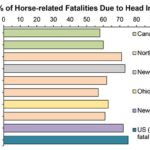Comparing and contrasting is a fundamental rhetorical device used to highlight similarities and differences between two or more subjects. This powerful technique allows writers to clarify complex ideas, persuade audiences, and enhance the overall impact of their writing. By strategically juxtaposing elements, writers can illuminate subtle nuances, reveal hidden connections, and ultimately guide readers toward a deeper understanding. This article explores the definition, purpose, and effective application of comparison and contrast as a rhetorical strategy.
Defining Comparison and Contrast as a Rhetorical Device
In rhetoric, comparison involves examining similarities between subjects, while contrasting focuses on their differences. When employed together, these techniques create a comprehensive analysis that allows for a nuanced understanding of the subjects at hand. The goal is not merely to list similarities and differences but to use them strategically to achieve a specific rhetorical purpose.
The Purpose of Comparing and Contrasting
Comparison and contrasting serves several key purposes in writing:
- Clarification: By highlighting similarities and differences, writers can make complex ideas more accessible to their audience. Comparing a new concept to a familiar one can bridge the gap in understanding. For example, explaining a new software program by comparing its features to a well-known predecessor can help users quickly grasp its functionality.
- Persuasion: This technique can be highly persuasive, especially when arguing for the superiority of one subject over another. By showcasing the advantages of a preferred option and the disadvantages of alternatives, writers can sway their audience towards a desired conclusion. For instance, a car advertisement might compare the fuel efficiency and safety features of its model against competitors to persuade potential buyers.
- Emphasis: Contrasting sharply divergent elements can create emphasis and dramatic effect. This technique allows writers to highlight critical distinctions and make their arguments more memorable. For instance, contrasting the stark realities of poverty with the opulence of extreme wealth can underscore the severity of economic inequality.
- Organization: Comparison and contrast provides a logical framework for organizing information. Writers can choose to structure their arguments point-by-point, addressing each aspect of comparison for both subjects in turn, or subject-by-subject, dedicating separate sections to each subject and discussing all relevant points within those sections.
Effective Strategies for Comparing and Contrasting
To effectively utilize comparison and contrast, writers should consider the following strategies:
-
Establish clear criteria: Define the specific points of comparison or contrast. This ensures a focused analysis and prevents the discussion from becoming too broad or unfocused.
-
Maintain balance: Give equal weight to both subjects being compared. Avoid bias by presenting a fair and objective analysis of both the similarities and differences.
-
Use appropriate transitions: Employ transitional words and phrases (e.g., similarly, conversely, in contrast, on the other hand) to guide the reader smoothly through the comparison and contrast. This enhances clarity and coherence.
-
Choose an effective organizational structure: Select either the point-by-point or subject-by-subject approach based on the complexity of the topic and the desired emphasis.
Conclusion
Is Comparing And Contrasting A Rhetorical Device? Absolutely. It is a versatile and powerful tool that enhances clarity, persuasiveness, and organization in writing. By understanding its purpose and employing effective strategies, writers can leverage this technique to create impactful and compelling content that resonates with their audience. Mastering the art of comparison and contrast is essential for anyone seeking to communicate effectively and persuasively.
